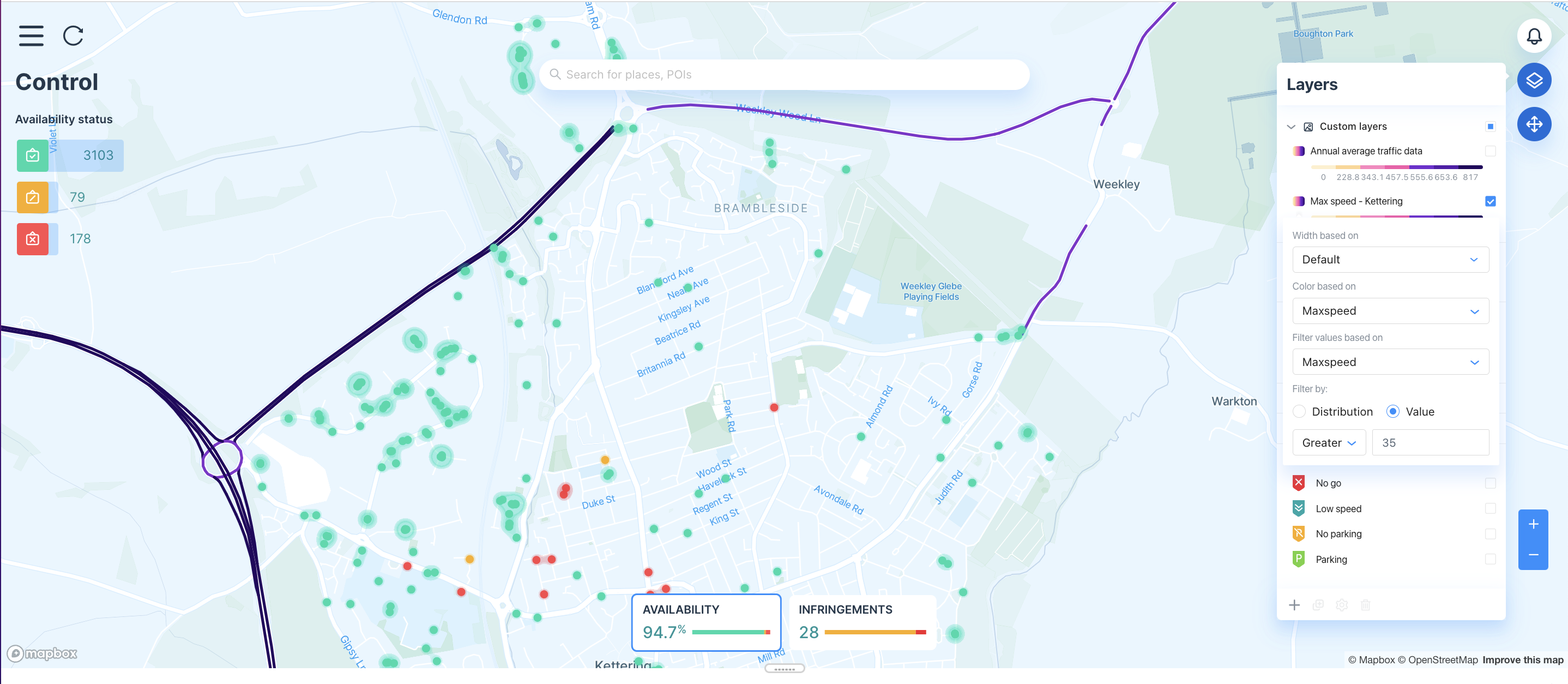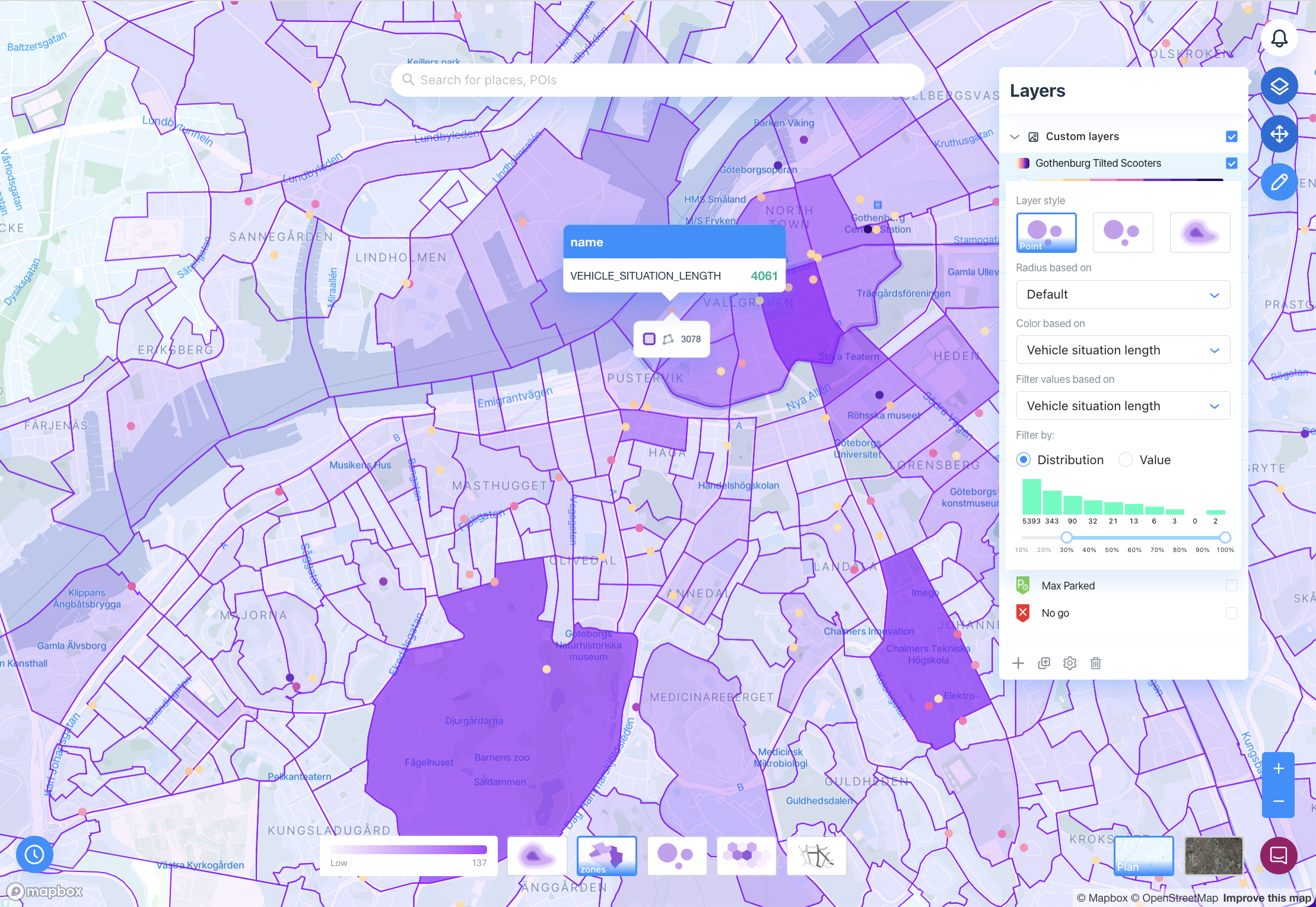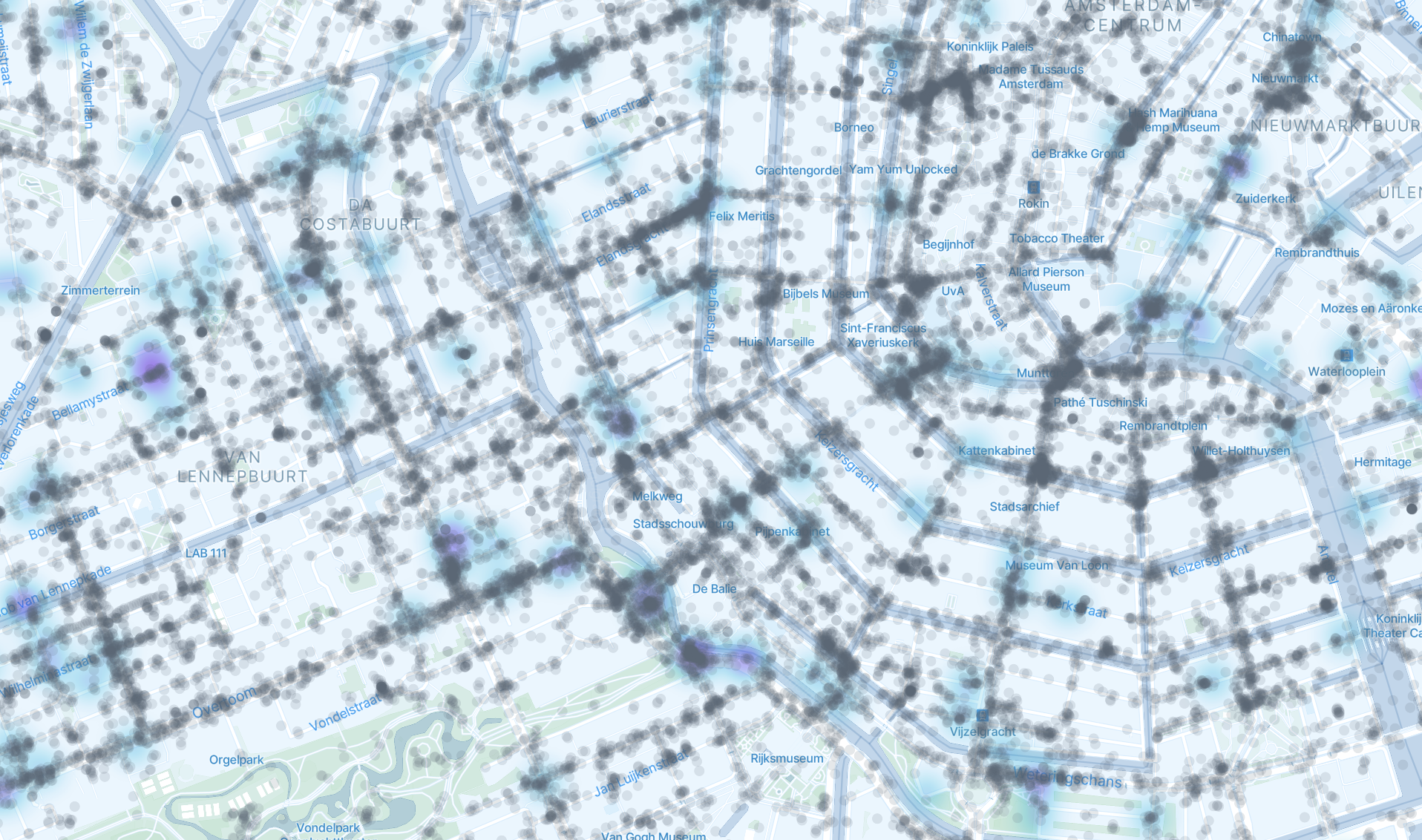Bring Your Own Data Examples
As we continue to develop our "Bring Your Own Data" capabilities, we will use this page to share examples of customers who have created new insights through adding their own data onto the platform.
Creating Smarter No-Go Areas with Road Speeds
In a UK client city, the client wanted to better design no-go areas in areas where conflicts with high-speed vehicles were likely. The shared mobility program manager requested a shapefile of the posted speed limits on all streets in the town. They then uploaded these road limits using the custom layers experience.

By filtering the dataset to show only those roads with a max speed about 35 miles per hour, the customer was able to identify areas where new no-go zones could be added. The customer was able to draw the zones quickly and efficiently based on the data available in Cityscope.
Adding Supplemental Data on Tilted Devices
MDS and GBFS are powerful data standards for shared mobility. But they have limitations and don't always convey all the information a city would like to know. In Gothenburg, one operator has provided the city with additional information about the duration (in seconds) of incidents where a scooter is knocked onto its side. This information helps the city better plan parking locations and prioritize enforcement.

By uploading this data collected on an aftermarket sensor, the operator is able to provide a richer context to the city, helping it to make smarter decisions. The city can further filter or refine the data to target the areas where only the longest incidents occur in order to better direct limited resources.
Identifying Areas with Unmet Demand
Operators can share data to cities regarding the location of app opens, in particular app opens that do not result in trips. The city can compare this data against the existing location of parking or other infrastructure and potentially modify the service area of devices.
In Amsterdam, the app open data of one of the shared mobility companies was used to produce a set of recommendations for new mobility hubs, particularly to service areas that are under-served by shared mobility today.

Updated 2 months ago
